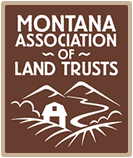MALT executive director Glenn Marx worked for former Montana Congressman Ron Marlenee from 1981 to 1988, serving as press secretary, chief of staff and campaign manager. Ron passed away in late April. Glenn salutes his former boss in a letter to the editor published in the Helena Independent Record.
2020 News
Another Great Year for Montana Elk and Elk Habitat
In 2019, the Rocky Mountain Elk Foundation provided access to 47,416 acres in Montana and contributed over $2.6 million to enhance over 23,000 acres of habitat. Read more about RMEF’s Montana accomplishments in the 2019 RMEF Montana report.2019-Montana-Projects
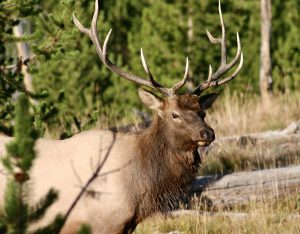
Flathead River Conservation Project Completed
Great news from the Flathead: The 155-acre Flathead River Conservation Project has been finalized. Wonderful for wetlands, water, wildlife and farmland.
From Flathead Land Trust: …the project protects 155 acres along a third of a mile of the Flathead River owned by Bob Danford. The land has key wetlands and riparian habitat important to a plethora of wildlife as well as rich farmland Bob and his family have been farming and stewarding for almost 100 years. The project adds to a network of conserved land totaling almost 12,000 acres along the Flathead River important to sustaining the River and Flathead Lake’s excellent water quality and the incredible quality of life we enjoy in the Flathead Valley.
The project was made possible with a federal grant from the Natural Resource Conservation Service Agricultural Land Easement Program which provides funding to farmers to keep their rich land in agriculture. Non-federal matching funds needed to obtain the grant were provided by the Flathead Lakers, Cinnabar Foundation, Horne Family Foundation, Charlotte Martin Foundation, Vital Ground Foundation, Montana Ducks Unlimited, Montana Trout Unlimited, Flathead Valley Trout Unlimited, Flathead Wildlife, National Fish and Wildlife Foundation Conoco Phillips Spirit of Conservation Program, Montana Fish, Wildlife and Parks Wildlife Mitigation Program, and over 100 people from the community – many of you. The Danford family also donated over a third of the value of the conservation easement through a bargain sale.
Torrance Smith photo
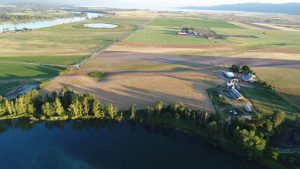
Stay Safe, Stay Healthy: Go Outside
Gallatin Valley Land Trust is featured in a Montana Free Press article titled “Penned up by the pandemic, Montanans try to get well by getting out.” The April 30 article is a comprehensive look at how Montanans are coping with COVID-19 restrictions – getting outside on trails is a major coping mechanism – and how state, federal, local and nonprofit entities are managing trails and recreational properties during the pandemic.
From the article: “…increased outdoor recreation has sparked concern over resource damage during the wet spring mud season. EJ Porth, associate director of the Gallatin Valley Land Trust, said her organization has received requests from the public to close the Drinking Horse Trail due to damage caused by increased traffic and muddy conditions. Local officials opted to keep the trail open
“We can repair trails,” Porth said. “People’s mental health is more important right now.”
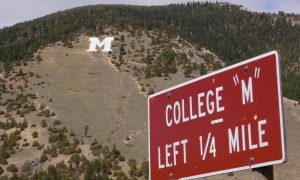
Sign-Up Open Through May 25 for MALT-Supported Cooperative PAL Agreements
PAL is short for the Public Access Land program, a new voluntary, incentive-based public access option administered by Montana FWP that was passed during the 2019 Montana Legislative Session with MALT’s support. PAL is a cooperative program to engage with landowners to open up currently inaccessible or hard to access public land.
The PAL initial application period is open until May 25.
From the Montana FWP website: The Public Access Land Agreement program is a creative way for landowners to provide public access to public lands for hunting and/or fishing, in exchange for a payment and other negotiated improvements to facilitate public access to public lands.
The FWP website spells out who is eligible, the basic provisions of the program, and the proposal review and approval process. Landowners may receive up to $15,000 annually for entering into a PAL agreement. Applications are reviewed by the Public Lands/Private Wildlife Advisory Committee and approved by the FWP director.
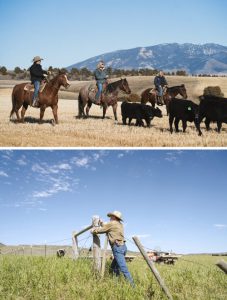
“Legacy of Open Space for Wildlife and Farming” in the Flathead
Flathead Land Trust’s conservation easement with Dean Robbins on land along Wiley Slough south of Kalispell will “pass the legacy of open space for wildlife and farming on to future generations.”
The 26-acre donated conservation easement is not large in size, but it is large in conservation value: The parcel stretches along 928 feet of the wetland’s shoreline and is adjacent to another 1,235 acres of previously protected land.
The Kalispell Daily Interlake reports, According to the Flathead Lakers, a nonprofit organization that aims to protect the Flathead Watershed, these sloughs are used by a great number of migratory waterfowl, osprey, upland game birds, great blue heron and double-crested cormorants. They are also important habitats for river otter and other wildlife that travel along the river.
At Wiley Slough, an intact strip of riparian and wetland vegetation around the minimizes disturbances during critical migration periods. The open space provided by the farms also supports valuable wildlife habitat.
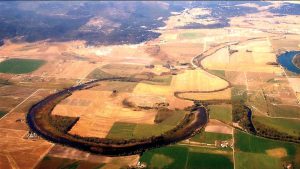
Great American Outdoors Act in Next COVID-19 Federal Package?
Momentum is building in Washington, DC, and across the country around an effort to include the Great American Outdoors Act – which includes a provision for permanent full funding of the Land and Water Conservation Fund – in the next major COVID-19 stimulus package considered by Congress.
Some evidence of that momentum:
* A May 7 article in E&E News under the headline “Could outdoors bills get an inside track in stimulus?” reports growing public and congressional support for inclusion of the GAOA (S. 3422) in whatever pandemic response legislation Congress develops next. The article reports Montana Senator Steve Daines is actively pushing for Congress to pass the GAOA. Daines is a LWCF leader in Congress.
* The Outdoor Recreation Roundtable, a national group dedicated to outdoor recreation, has voiced strong support for inclusion of the GAOA in any congressional stimulus legislation.
* Over 100 local officials from 11 western states (including Montana) recently signed a letter urging Congress to include full permanent LWCF funding in the next economic stimulus package.
* Over 800 businesses and organizations (including Montana) have signed a GAOA support letter urging Congress to view the GAOA as a legislative priority.
The timing of congressional action on a pandemic response stimulus remains uncertain, and the legislation’s contents are a long way from being finalized, but the belief is there will be a congressionally-approved stimulus bill sometime in the near future. And there is a broad, bipartisan, committed group working to include the GAOA in the stimulus package.
Montana Senator Jon Tester is also a longstanding LWCF leader.
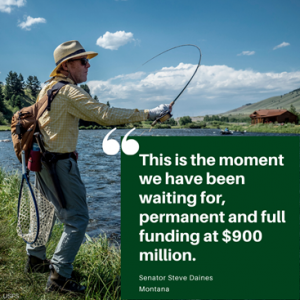
The Trust for Public Land and Land Trusts Express Gratitude
Several Montana communities and almost all the MALT membership were part of 2020 late April and early May charitable “Giving” events throughout the state. Several Montana land trusts posted social media and organizational “Thank Yous” to their community supporters and donors. Here’s a sample, from the The Trust for Public Land, thanking people for TPL charitable “Giving” support:
Thank you Gallatin Valley for showing up and giving BIG to support our community’s fantastic non-profits and our Story Mill Community Park FUND. Our community, our fantastic volunteers, our network of partners – in particular Treeline Coffee … From the bottom of our hearts, THANK YOU!
MALT also extends its thanks to everyone who is supporting land trusts and Montana private land conservation.

Montana TNC, NRCS, Sage Grouse Program, Team Up for SW Montana Conservation
The Nature Conservancy in Montana, the Montana Sage Grouse Habitat Conservation Program, the NRCS, and landowner Bryant Jones have officially finalized a roughly 4,000-acre conservation easement that protects sage grouse habitat and grasslands in southwest Montana. The Willow Basin Ranch project was approved for state sage grouse conservation funding in 2019 by the Montana Sage Grouse Oversight Team, and by the Natural Resources Conservation Service for Agricultural Land Easement Program funding through the Farm Bill.
“Our nearest neighbors are fifteen miles away,” says Jones. “I love the solitude and rugged untouched spirit the area has. It’s a unique and undeveloped corner of the world. I want to keep it that way.”
The Willow Basin easement is one of two recently completed in the High Divide by The Nature Conservancy in Montana. Together they secure nearly 7,000 acres of superb wildlife habitat as well as the future of these family ranches. These latest two easements are part of nearly 40,000 acres that TNC has secured since the winter of 2018.
“We are pleased to conserve what is essentially a ‘working wilderness’ where both wildlife and families who have been ranching for generations can both thrive,” says Jim Berkey, TNC’s High Divide Headwaters director. “These families are helping keep this vital habitat intact while helping feed the country.”
Montana TNC also reported it recently partnered with the USFWS and a central Montana landowner to conserve an additional 6,311 acres in Montana’s Northern Great Plains.
Jim Berkey/TNC Photo
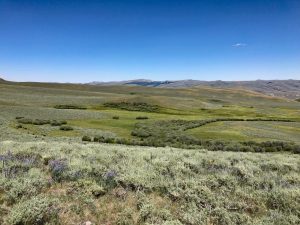
The Great American Outdoors Act: Great for Americans Outdoors
Prickly Pear Land Trust executive director Mary Hollow’s guest column in the Sunday, May 3, Helena Independent Record makes a case for quick passage of the Great American Outdoors Act. Among the provisions within the Great American Outdoors Act is full permanent funding for the Land and Water Conservation Fund.
“When our leaders in Congress established LWCF 56 years ago, little did they know that their bipartisan commitment to safeguarding our natural areas would be one of the constants for their children and grandchildren in a COVID-19 reality,” writes Hollow. “From Glacier and Yellowstone National parks to eastern Montana, our pristine outdoors feed our souls but they also drive this state’s economy. LWCF delivers pristine wildlife habitat and urban parks alike. It bridges rural urban divides, and Montana’s future economic and physical well-being depends on it; because our outdoor places fuel commerce for our Main Street businesses and large enterprises alike.”
“Today, as Congress works toward passing another COVID-19 package, they have the opportunity to pass the Great American Outdoors Act to fully fund LWCF, take care of the lands we love, and make smart investments in natural infrastructure that fuels our economy. Those investments will pay dividends for our natural systems – and the generations who inhabit them – forever,” she adds.

